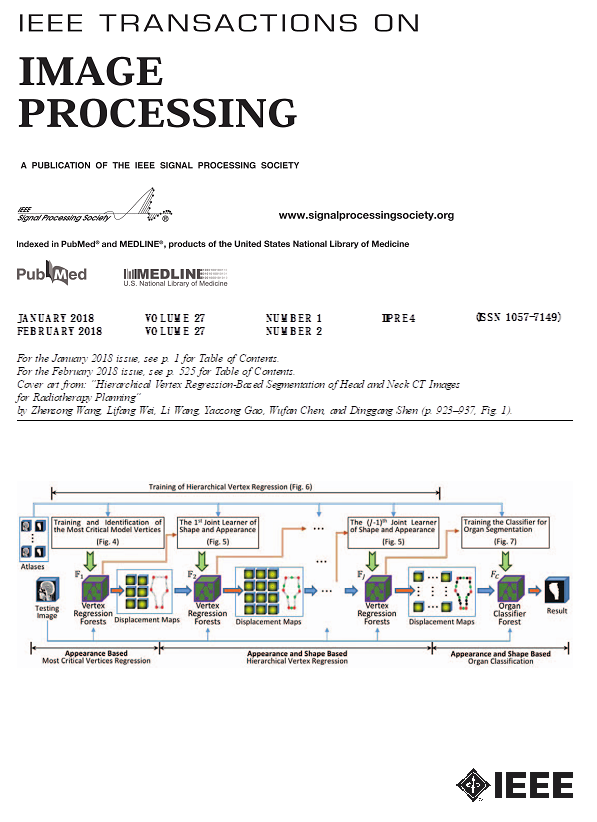基于4D卷积和多尺度高斯过程的光场图像去雨
IF 13.7
1区 计算机科学
Q1 COMPUTER SCIENCE, ARTIFICIAL INTELLIGENCE
引用次数: 5
摘要
现有的脱模方法主要集中在单个输入图像上。然而,只有一个单一的输入图像,很难准确地检测和去除雨纹,以恢复一个无雨的图像。而光场图像(LFI)通过全光相机记录每条入射光线的方向和位置,从而嵌入目标场景丰富的三维结构和纹理信息。lfi在计算机视觉和图形社区中越来越流行。然而,如何充分利用lfi提供的丰富信息,如子视图的二维阵列和每个子视图的视差图,进行有效的降雨清除仍然是一个具有挑战性的问题。在本文中,我们提出了一种新的方法4D-MGP-SRRNet,用于从lfi中去除雨纹。我们的方法将雨天LFI的所有子视图作为输入。为了充分利用LFI,采用4D卷积层同时处理LFI的所有子视图。在此基础上,提出了一种新的多尺度自引导高斯过程(MSGP)模块的降雨检测网络MGPDNet,用于从输入LFI的所有子视图中检测多尺度的高分辨率雨条。引入半监督学习的MSGP,通过对虚拟世界的雨天lfi和现实世界的雨天lfi在多尺度上进行训练,通过计算真实世界的雨条的伪地面真理,准确地检测雨条。然后,我们将减去预测雨条的所有子视图馈送到基于4D卷积的深度估计残差网络(DERNet)中,以估计深度图,然后将其转换为雾图。最后,将所有与相应雨条和雾图相关联的子视图输入到基于对抗递归神经网络的强大降雨LFI恢复模型中,逐步消除雨条,恢复无雨LFI。对合成lfi和实际lfi进行的大量定量和定性评估证明了我们提出的方法的有效性。本文章由计算机程序翻译,如有差异,请以英文原文为准。
Rain Removal From Light Field Images With 4D Convolution and Multi-Scale Gaussian Process
Existing deraining methods focus mainly on a single input image. However, with just a single input image, it is extremely difficult to accurately detect and remove rain streaks, in order to restore a rain-free image. In contrast, a light field image (LFI) embeds abundant 3D structure and texture information of the target scene by recording the direction and position of each incident ray via a plenoptic camera. LFIs are becoming popular in the computer vision and graphics communities. However, making full use of the abundant information available from LFIs, such as 2D array of sub-views and the disparity map of each sub-view, for effective rain removal is still a challenging problem. In this paper, we propose a novel method, 4D-MGP-SRRNet, for rain streak removal from LFIs. Our method takes as input all sub-views of a rainy LFI. To make full use of the LFI, it adopts 4D convolutional layers to simultaneously process all sub-views of the LFI. In the pipeline, the rain detection network, MGPDNet, with a novel Multi-scale Self-guided Gaussian Process (MSGP) module is proposed to detect high-resolution rain streaks from all sub-views of the input LFI at multi-scales. Semi-supervised learning is introduced for MSGP to accurately detect rain streaks by training on both virtual-world rainy LFIs and real-world rainy LFIs at multi-scales via computing pseudo ground truths for real-world rain streaks. We then feed all sub-views subtracting the predicted rain streaks into a 4D convolution-based Depth Estimation Residual Network (DERNet) to estimate the depth maps, which are later converted into fog maps. Finally, all sub-views concatenated with the corresponding rain streaks and fog maps are fed into a powerful rainy LFI restoring model based on the adversarial recurrent neural network to progressively eliminate rain streaks and recover the rain-free LFI. Extensive quantitative and qualitative evaluations conducted on both synthetic LFIs and real-world LFIs demonstrate the effectiveness of our proposed method.
求助全文
通过发布文献求助,成功后即可免费获取论文全文。
去求助
来源期刊

IEEE Transactions on Image Processing
工程技术-工程:电子与电气
CiteScore
20.90
自引率
6.60%
发文量
774
审稿时长
7.6 months
期刊介绍:
The IEEE Transactions on Image Processing delves into groundbreaking theories, algorithms, and structures concerning the generation, acquisition, manipulation, transmission, scrutiny, and presentation of images, video, and multidimensional signals across diverse applications. Topics span mathematical, statistical, and perceptual aspects, encompassing modeling, representation, formation, coding, filtering, enhancement, restoration, rendering, halftoning, search, and analysis of images, video, and multidimensional signals. Pertinent applications range from image and video communications to electronic imaging, biomedical imaging, image and video systems, and remote sensing.
 求助内容:
求助内容: 应助结果提醒方式:
应助结果提醒方式:


